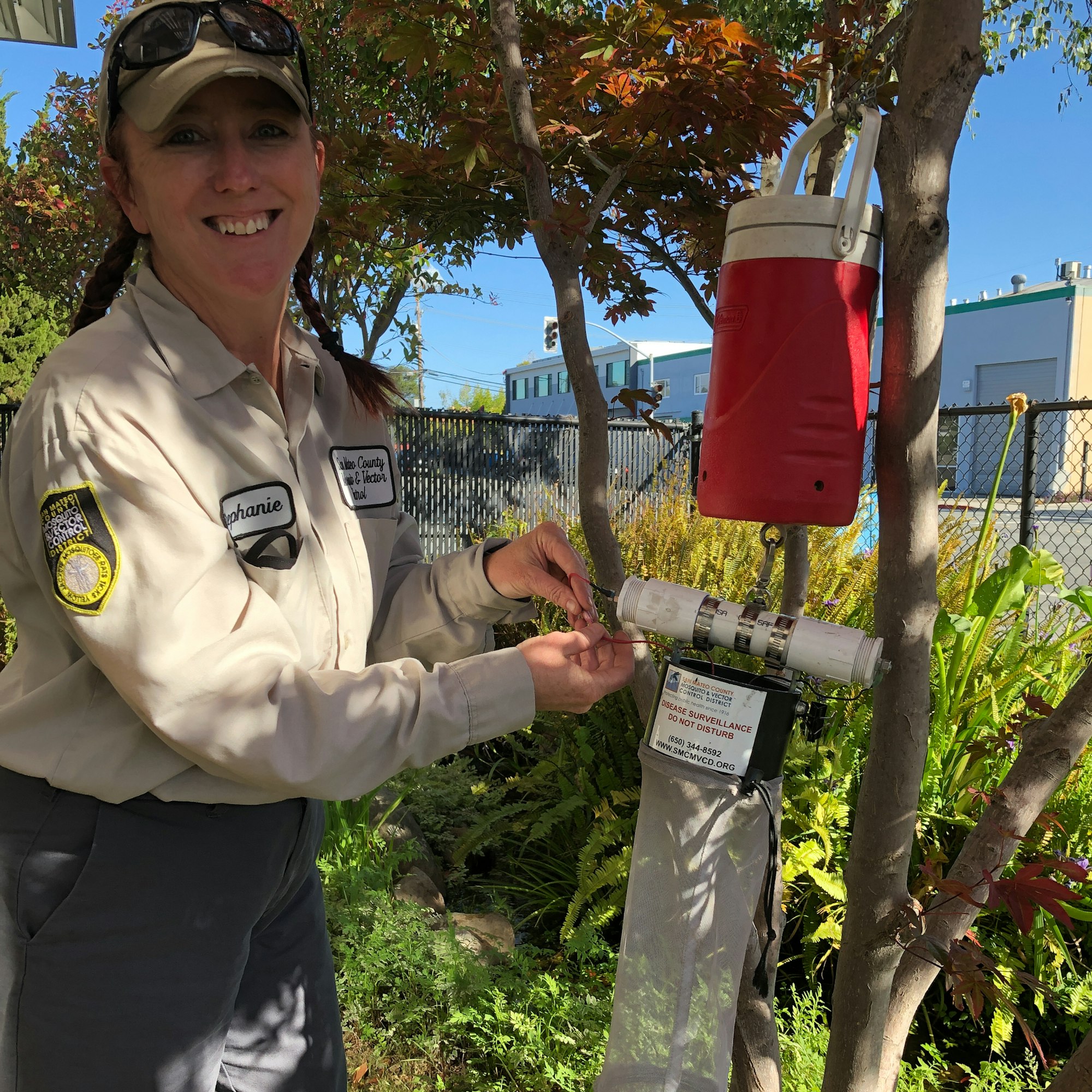Mosquito Traps
The District has an extensive mosquito trapping program used to monitor mosquito populations and to detect diseases. Different types of traps are used depending on the environment, the species to be trapped, and the type of data needed.
The mosquitoes collected in surveillance traps are used to estimate population levels of various mosquito species in San Mateo County. Population densities are estimated based on the number of female mosquitoes collected in a given 24-hour period. They are tallied and averaged over five years, by month, to account for changes in population due to environmental and sampling factors.
A portion of collected mosquitoes are also used in disease surveillance to test for West Nile virus and other mosquito-borne diseases. The mosquitoes collected in District traps are pooled together, by species, into groups of 12–50 mosquitoes. They are then tested together for diseases of interest.
For more information on our mosquito surveillance program, please visit our mosquito surveillance data section.
Carbon Dioxide (CO2) traps

Carbon dioxide (CO2) traps consist of a thermos filled with dry ice connected to a fan running on batteries and covered by a net bag. Mosquitoes are attracted to carbon dioxide given off by the dry ice as it melts, which mimics human breathing. As mosquitoes come close to the thermos, they are sucked down by the fan and into the net bag.
Ovicups and Ovibuckets

Ovicups consist of a small plastic cup filled with tap water and a regular wooden tongue depressor wrapped in a coffee filter (the larger version is an ovibucket). This unlikely-sounding combination of ordinary materials is irresistible to container-breeding mosquitoes like Aedes aegypti, who are lured to the ovicup to lay their eggs on the wet coffee filter. Laboratory staff inspect the ovicups weekly for mosquito eggs and larvae, and identify them by species. Any eggs or larvae are then destroyed to prevent the emergence of adult mosquitoes.
Autocidal Gravid Ovitraps (AGO traps)

AGO traps consist of a bucket of water with a special lid containing a sticky surface. Female mosquitoes enter the trap to lay their eggs, then become stuck to the inside of the trap. Laboratory staff collect mosquitoes from AGO traps every other week and identify them by species. Since mosquitoes are unable to access the water in the trap, they cannot lay their eggs.

BG Sentinel traps
One type of CO2 trap is called a BG Sentinel trap. Unlike ovicups and AGO traps, they attract female mosquitoes who are hoping to find a meal. BG Sentinel traps use dry ice to produce carbon dioxide vapor, which mimics human exhalation. They also contain a special chemical that smells like a human to the mosquito. When female mosquitoes approach to bite, they are sucked into a collection bag by a tiny fan. These traps are deployed overnight, and laboratory staff retrieve mosquitoes from the trap the next day and identify them by species.
Collection Bottle Rotator traps
For mosquito population studies, the District laboratory sometimes uses a collection bottle rotator trap to see what kind of mosquitoes are active at different times. This trap uses a series of collection bottles to collect samples throughout the day and night.

Page last reviewed: September 8, 2023
